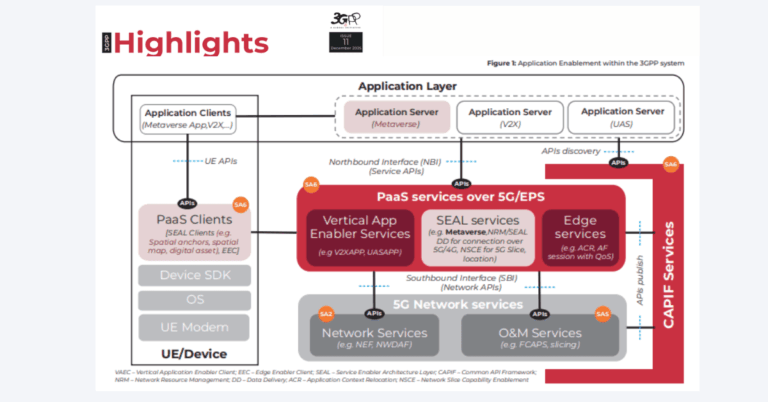AT&T Q3 2025 Results: Wireless, Fiber, and Cash Flow Strength
AT&T’s third quarter shows steady operational execution in wireless and fiber, supported by portfolio moves that aim to strengthen capacity, reach, and cash generation through 2027.
Q3 Results: Revenue, EPS, and Free Cash Flow
AT&T reported Q3 2025 revenue of $30.7 billion, up 1.6% year over year, with diluted EPS of $1.29 boosted by a gain related to the sale of its DIRECTV investment; adjusted EPS was $0.54, roughly flat year over year. Operating income was $6.1 billion; adjusted operating income reached $6.6 billion. Free cash flow improved to $4.9 billion from $4.6 billion a year ago, a key metric for debt reduction and capital returns.
Service-Led Earnings Mix: Mobility and Fiber
Mobility service revenue rose 2.3% to $16.9 billion, reflecting a stable postpaid base and pricing discipline. Consumer fiber broadband revenue increased 16.8% year over year, underscoring the shift toward higher-quality, recurring connectivity revenue. The combination of service growth and moderating equipment volatility continues to de-risk earnings and support predictable cash flows.
Customer Metrics: Fiber–Mobility Convergence Gains
AT&T’s cross-sell between fiber and mobility is showing tangible traction in both net additions and churn control.
Mobility Momentum: Postpaid Net Adds and Churn
Postpaid phone net adds were 405,000, and postpaid phone churn was 0.92%. These metrics point to continued customer stability amid a competitive 5G market and indicate that AT&T’s retention levers—network performance, pricing, and bundling—are holding.
Fiber Growth and Fixed Wireless (Internet Air) Expansion
AT&T added 288,000 AT&T Fiber customers and 270,000 AT&T Internet Air customers, broadening its broadband reach across addressable markets. Fiber continues to anchor premium ARPU and lifetime value, while Internet Air (fixed wireless access) provides a flexible deployment option to accelerate coverage and capture share where fiber is not yet built.
Bundling Impact: 41% Fiber–Mobility Households
More than 41% of AT&T Fiber households also subscribe to AT&T Mobility. This bundling supports lower churn, higher wallet share, and better long-term unit economics—key advantages as the industry gravitates toward integrated connectivity offerings.
Portfolio Strategy: Fiber Scale, Spectrum Depth, Capital Returns
AT&T is reshaping its asset base to add fiber scale, strengthen spectrum depth, and return capital within a disciplined framework.
Lumen Fiber Acquisition: $5.75B for Metro and Enterprise Scale
AT&T agreed to acquire fiber assets from Lumen for $5.75 billion, with closing expected in early 2026. The deal should expand addressable fiber passings and accelerate AT&T’s presence in attractive metro and enterprise corridors, improving route diversity and service options for both consumer and business customers.
EchoStar Spectrum Licenses: $23B for 5G Capacity
AT&T plans to acquire wireless spectrum licenses from EchoStar for approximately $23 billion, targeted to close in the first half of 2026. Additional spectrum enhances mid-to-long-term capacity planning for 5G and future 5G-Advanced services, supporting performance, coverage, and enterprise-grade SLAs as data demand rises.
Capital Allocation: Share Repurchases and FCF Outlook
AT&T repurchased $1.5 billion of common shares in the quarter, taking total buybacks under the 2024 authorization to more than $2.4 billion. With free cash flow trending to the low-to-mid $16 billion range for 2025, AT&T is balancing network investment with shareholder returns.
Implications for Carriers and Enterprise Connectivity
The quarter’s mix of service growth, fiber momentum, and spectrum strategy signals a more durable connectivity platform for customers and partners.
5G and Broadband Competition: Network, Fiber, and FWA
In mobility, steady postpaid growth and low churn suggest network parity is consolidating around performance and experience rather than price-only competition. In broadband, fiber remains the premium product, and AT&T’s expanding footprint—augmented by fixed wireless in select areas—positions it to target both legacy cable share and greenfield demand. Spectrum additions, if approved, set up capacity headroom for 5G-Advanced features and emerging edge and IoT workloads.
Enterprise Takeaways: Uptime, Latency, and Route Diversity
More fiber routes and licensed spectrum depth are positives for uptime, route diversity, and predictable latency—important for SD-WAN, SASE, private 5G extensions, and cloud interconnect. Buyers planning multi-site modernization should see expanding access options, improved availability, and stronger service-level constructs across metro and regional footprints.
Outlook: Guidance, Trajectory, and Watchlist
Management reiterated guidance, emphasizing service-led growth, operating leverage, and cash generation through 2027.
2025 Guidance: Service Revenue, EBITDA, and FCF
AT&T expects consolidated service revenue growth in the low-single digits, mobility service revenue growth of 3% or better, and consumer fiber broadband revenue growth in the mid-to-high teens. Adjusted EBITDA is projected to grow 3% or better, with free cash flow in the low-to-mid $16 billion range.
2026–2027 Trajectory: Service Growth and EPS Acceleration
The company anticipates consolidated service revenue growth in the low-single digits annually across 2026 and 2027, with adjusted EPS accelerating to double-digit percentage growth in 2027. Portfolio actions around fiber and spectrum are intended to underpin that trajectory.
Key Risks and What to Monitor
Regulatory approvals and integration for the Lumen and EchoStar transactions, execution on fiber build and penetration targets, and disciplined pricing in a competitive wireless market will be critical. Monitor fixed wireless economics as usage scales, churn trends into the holiday cycle, and the cadence of capital returns relative to deleveraging goals.
Bottom Line: Network-Led Growth Through 2027
AT&T’s Q3 2025 results show steady service growth, healthy fiber momentum, and a clearer plan to scale capacity and reach; if execution holds on fiber, spectrum, and cash, the company is positioned for sustainable network-led returns into 2027.








































